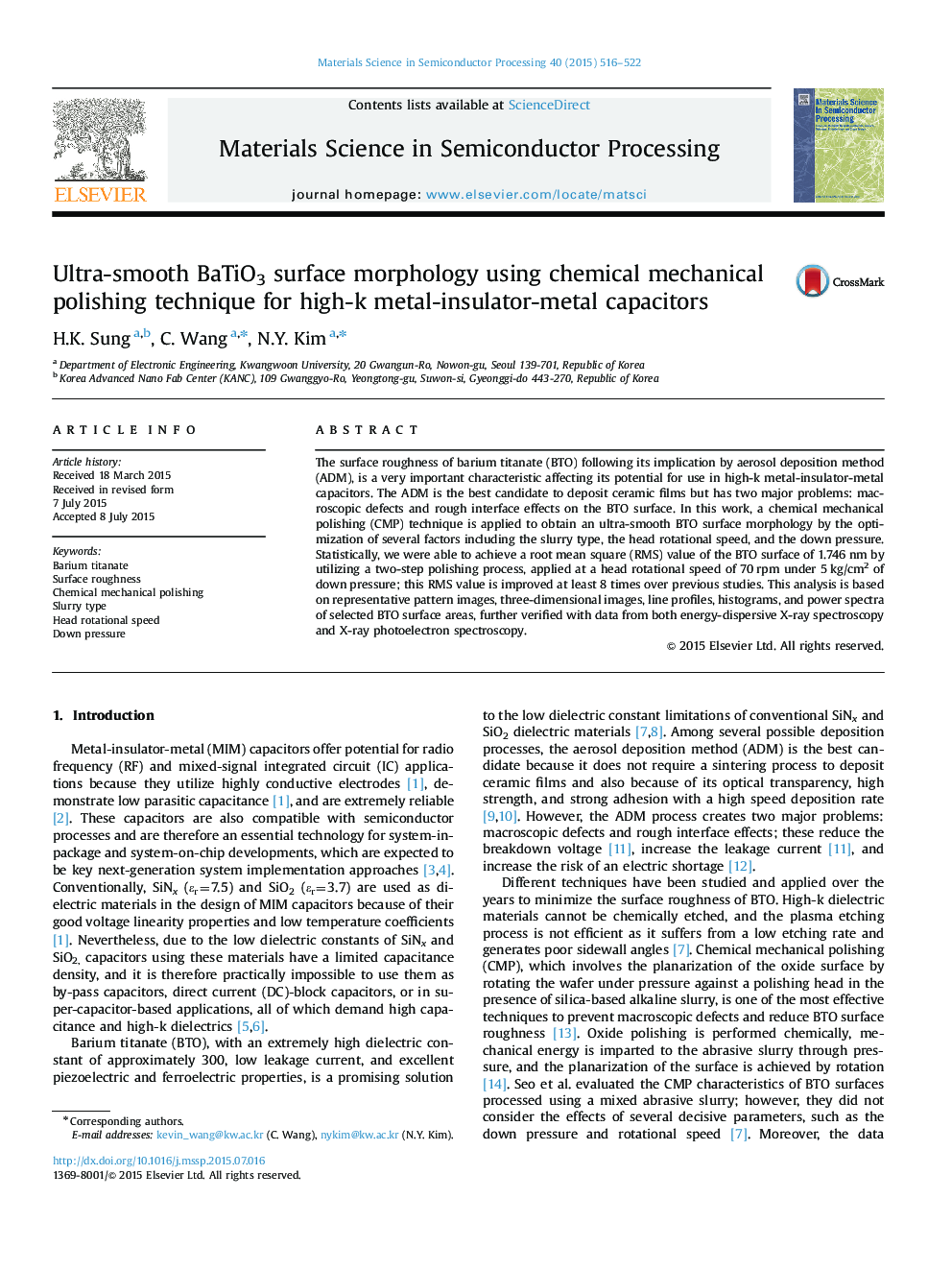| Article ID | Journal | Published Year | Pages | File Type |
|---|---|---|---|---|
| 7119092 | Materials Science in Semiconductor Processing | 2015 | 7 Pages |
Abstract
The surface roughness of barium titanate (BTO) following its implication by aerosol deposition method (ADM), is a very important characteristic affecting its potential for use in high-k metal-insulator-metal capacitors. The ADM is the best candidate to deposit ceramic films but has two major problems: macroscopic defects and rough interface effects on the BTO surface. In this work, a chemical mechanical polishing (CMP) technique is applied to obtain an ultra-smooth BTO surface morphology by the optimization of several factors including the slurry type, the head rotational speed, and the down pressure. Statistically, we were able to achieve a root mean square (RMS) value of the BTO surface of 1.746Â nm by utilizing a two-step polishing process, applied at a head rotational speed of 70Â rpm under 5Â kg/cm2 of down pressure; this RMS value is improved at least 8 times over previous studies. This analysis is based on representative pattern images, three-dimensional images, line profiles, histograms, and power spectra of selected BTO surface areas, further verified with data from both energy-dispersive X-ray spectroscopy and X-ray photoelectron spectroscopy.
Related Topics
Physical Sciences and Engineering
Engineering
Electrical and Electronic Engineering
Authors
H.K. Sung, C. Wang, N.Y. Kim,
